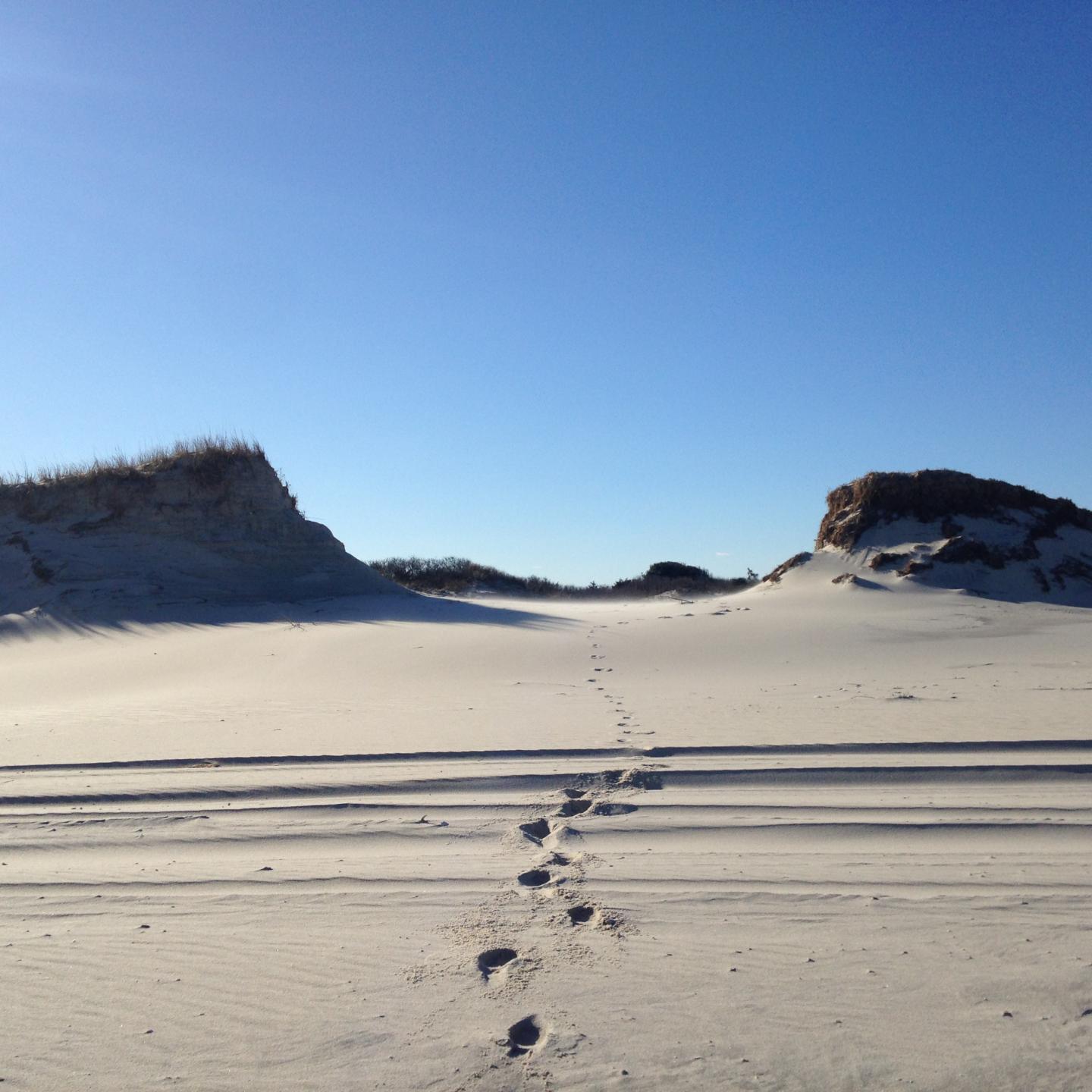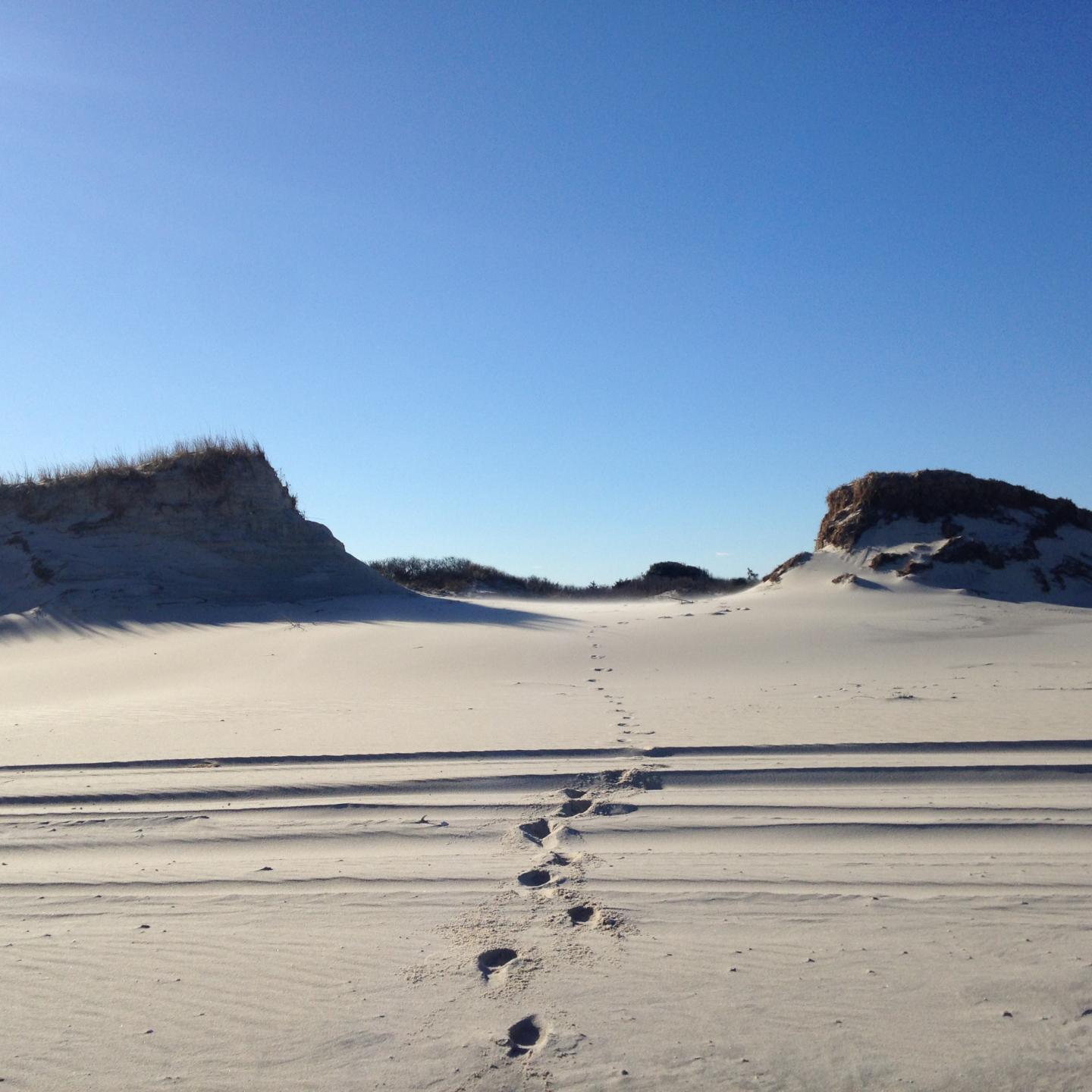
Credit: Bianca Charbonneau
The invasive species Carex kobomugi, or Asiatic sand sedge, was first found along the East Coast of the United States at New Jersey's Island Beach State Park in 1929. The species is aggressive, outcompeting native vegetation and reducing local biodiversity. In many places, land managers have made great efforts to remove it.
But a new study published in the Journal of Applied Ecology and led by University of Pennsylvania doctoral candidate Bianca Charbonneau finds that the invasive plant does have one advantage over its native counterpart, Ammophila breviligulata, or American beach grass: the invasive is better at preventing erosion of dunes during big storms.
With a warming climate battering the coast with more severe storms, the research suggests that, to protect coastal communities, managers may want to give weight to the virtues of the non-native species.
"In order to make an informed management decision, you really need to know all the cards at play and this is an important one," said Charbonneau, a student in the School of Arts & Sciences' Biology Department. "If you value the natural composition and habitats afforded by native plant diversity, you should be trying to control this invasive. If your priority is protecting houses on the coast, you might consider letting it lie, or at least letting it lie until there is a plan to replace it so you do not leave a vulnerable unvegetated area in a dune. However, there is a caveat in that we do not know how dunes develop with one species versus another in terms of growth rate and shape."
Charbonneau collaborated on the study with Louise S. Wootton of Georgian Court University, John P. Wnek of the Marine Academy of Technology and Environmental Science and J. Adam Langley and Michael A. Posner of Villanova University, where Charbonneau earned her master's degree, with this study at the heart of her thesis.
Charbonneau has been studying how dunes respond to storms and the role of plants in stabilizing dunes since just after Superstorm Sandy, which ravaged the northeastern coast in October of 2012. In the current work, she and colleagues wanted to know if dunes vary in stability and resistance to erosion based on what species is stabilizing the forefront of the dune.
"In general we know that plant roots are integral for holding the dune together and the leaves provide surface drag when you have washover from a storm," Charbonneau said. "But we didn't know if there were species differences in erosion control due to differences in morphology and density."
Island Beach State Park presented an opportune place to study this potential species effect on erosion, as it has two dominant dune plant species that do not intermingle.
The researchers had GPS plant stand data on species distribution before and after Sandy. With this data, they used geographic information system technology to calculate stand sizes when the storm hit.
To determine the degree of dune erosion in the areas covered by each species, the team developed a new metric of erosion, Dune Crest Transgression, or DCT. While the typical way of measuring erosion is to calculate volumetric loss, using data from satellites to obtain measurements of the dune's three-dimensional surface area before and after an event, that data is expensive and therefore often unavailable unless a storm is exceptionally devastating, like Sandy.
To develop a more accessible measurement technique, the researchers used the change in position of the dune crest pre- and post-Sandy to evaluate erosion as a two-dimensional metric, DCT. With aerial images and elevation data from the National Oceanic and Atmospheric Administration, they determined the dune crest location pre- and post-storm, evaluating DCT as a function of pre-storm dune height and beach width and plant species stabilizing the dune.
Comparing stands of the two different species, they found the invasive sedge appeared to be significantly better at helping the dunes withstand the force of the storm.
"We found that, across the park, approximately three meters more dune was lost in native grass stands compared to areas with the invasive," Charbonneau said.
Pre-storm beach width and dune height did not effect this result. They also calculated the traditional metric of erosion, volumetric loss. They found that their new technique aligns with the volumetric loss and thus can provide an accurate way of measuring erosion during a storm.
Though previously it was thought that shorter-statured plants, like the invasive sedge, led to shorter dunes, the new findings indicate that the height of the plant may not be as important as its ability to trap sand, or perhaps its root system. Charbonneau hopes to further explore in future work what features of the plant are most important for dune building and stability.
The researchers suggest that managers use the findings to help guide the dune conservation and restoration efforts, carefully considering their management priorities.
"Prior to this research, the park was trying everything to get rid of this invasive but no more," Charbonneau said. "I think that, while we still want to control it, any eradication effort needs to coincide with a planting to ensure the dune remains stabilized."
###
The study was supported by Villanova University.
Media Contact
Katherine Unger Baillie
[email protected]
215-898-9194
@Penn
http://www.upenn.edu/pennnews
############
Story Source: Materials provided by Scienmag





